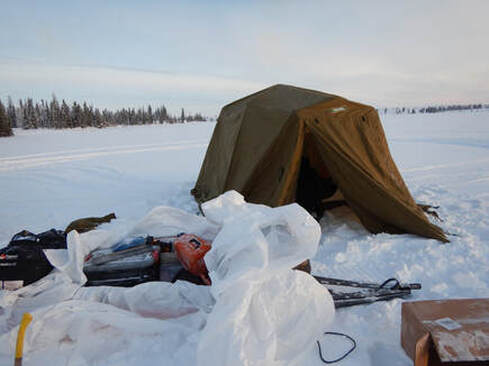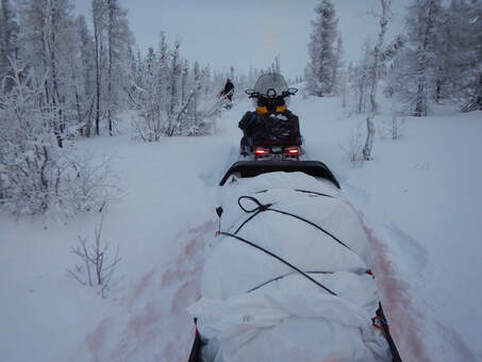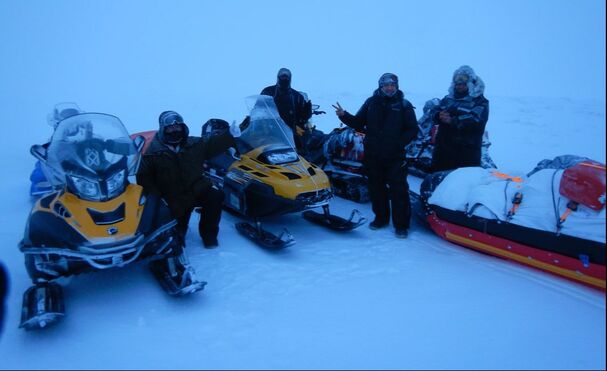 Ni Hat'ni Dene camping on a patrol at Eileen Lake, NT. Ni Hat'ni Dene use Arctic Oven tents purchased from Airframes Alaska.
Ni Hat'ni Dene camping on a patrol at Eileen Lake, NT. Ni Hat'ni Dene use Arctic Oven tents purchased from Airframes Alaska.
 Ni Hat'ni Dene stopped on the trail on Pike's Portage while on winter patrol.
Ni Hat'ni Dene stopped on the trail on Pike's Portage while on winter patrol.
 Ni Hat'ni Dene check in with local hunters from Łutsël K’é while on patrol on hazú (tundra).
Ni Hat'ni Dene check in with local hunters from Łutsël K’é while on patrol on hazú (tundra).
CONNECT |
VISIONWe are the Lutsel K’e Dene First Nation. Our vision for Thaidene Nëné is:
Nuwe néné, nuwe ch'anıé yunedhé xa (Our land, our culture for the future). We’re working with our partners to permanently protect Thaidene Nëné—part of our huge and bountiful homeland around and beyond the East Arm of Tu Nedhé. |
